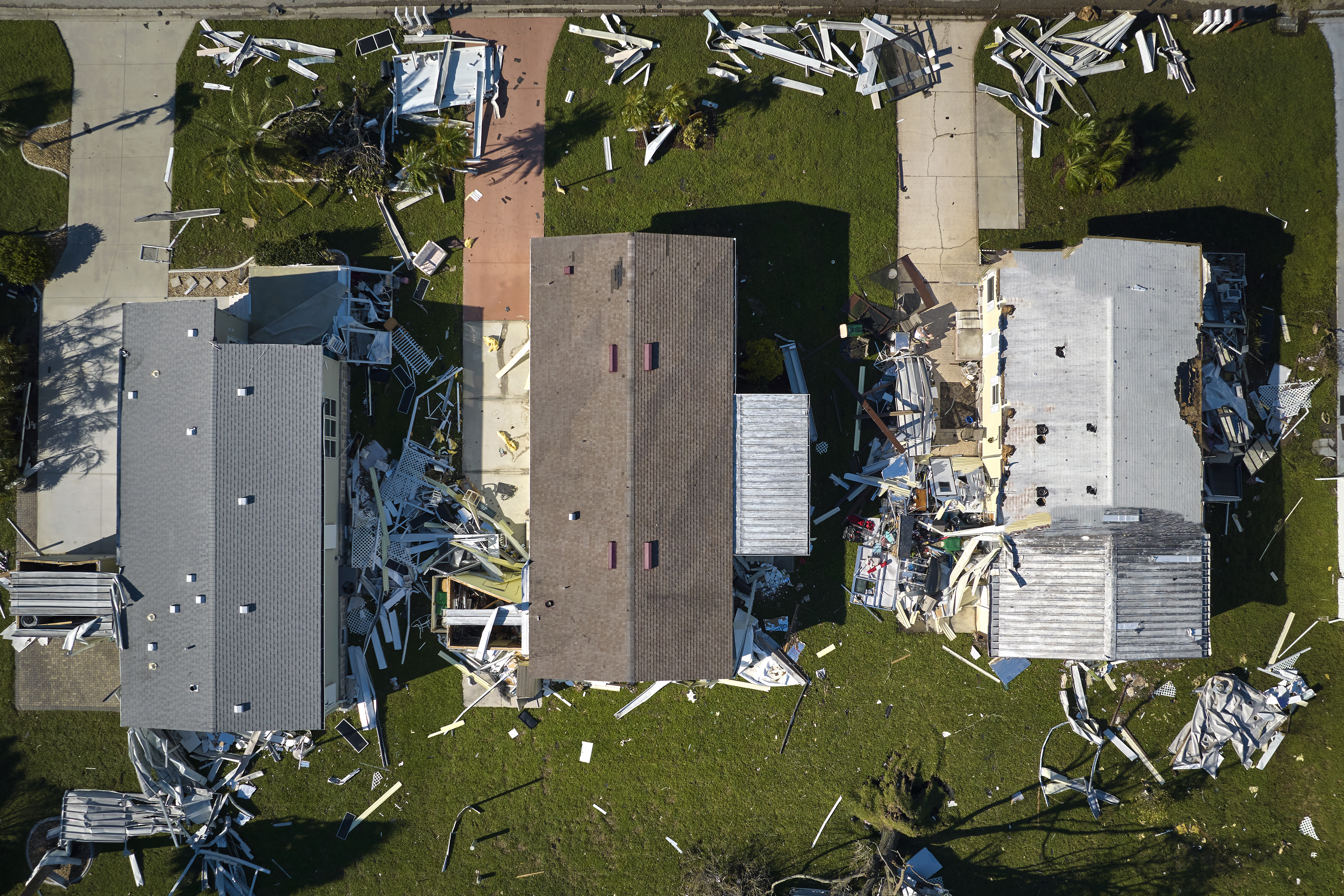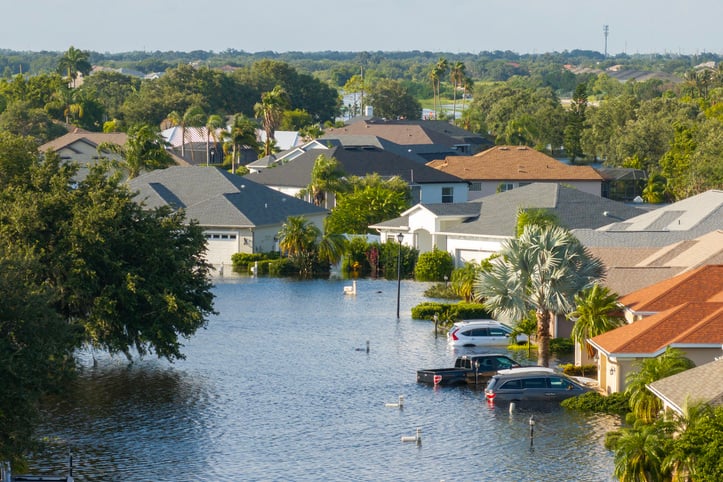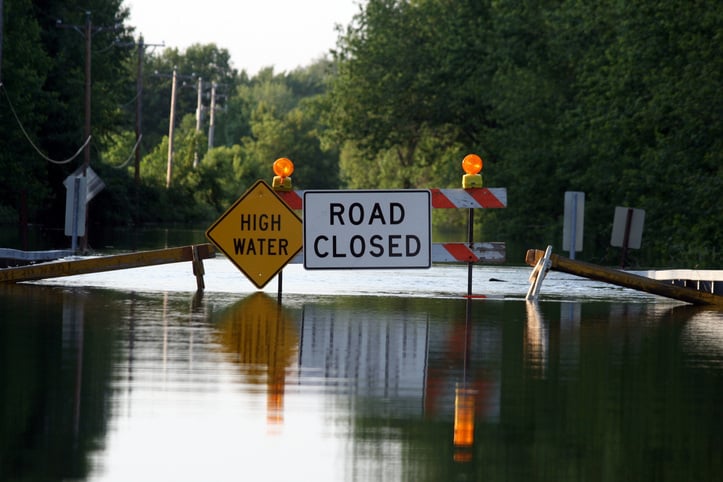The SFR Owner’s Guide to Disaster Preparedness and Recovery

Natural disasters like hurricanes, tornadoes and floods to wildfires and massive snowstorms, are a constant threat for single-family rental (SFR) investors and operators. But there are things you can do to help blunt their effects—both before and after. We outline tips for disaster preparedness and managing disaster recovery for SFR property owners.
In December 2022, more than 100 Americans lost their lives in the catastrophic winter storm in Buffalo, New York, with damages estimated at $5.4 billion. In late March 2022, a tornado outbreak tore through the Midwest, the South and the Eastern U.S., leaving $1.3 billion in damages in its wake.
Natural disasters like hurricanes, tornadoes and floods to wildfires and massive snowstorms, are a constant threat for single-family rental (SFR) investors and operators. But there are things you can do to help blunt their effects—both before and after. By taking proactive precautions, as well as important disaster recovery steps, you’ll be ahead of the game should an event impact the SFR properties in your portfolio.
Preparing Your SFR Property for a Disaster
Know the status of your property
Keeping up with periodic inspections and property checks (exterior and interior) throughout the year—and not just ahead of a storm or other event—helps ensure you’re up to date on the true status of your asset. Whether your property is rented or vacant, your property services partner can help you keep an eye on it through drive-by inspections and take pictures you’ll be able to use later to compare against a disaster inspection.
Keep up with exterior maintenance
In high-wind conditions, objects of all sizes can be weaponized against your property. Keeping up with regular exterior maintenance, including keeping trees trimmed and gutters cleaned, can help limit potential property damage in high-wind events as well as wildfires. Even greater protection can be achieved through property upgrades, such as replacing tree varieties that are prone to storm damage with trees that are more appropriate for soil and weather conditions in your area.
|
Be Prepared for the |
|
The 2023 Atlantic Hurricane season officially began on June 1st and ends on November 30th. Surveying and creating a detailed report of hurricane damage is essential during this time to get repairs completed and mitigate further damage. Below are some examples of damages that should be assessed:
Taking full-scope photos from different angles during daylight hours along with detailed notes for any damage found will help your service providers supply comprehensive bids. Make sure to provide accurate sources of mold, including but not limited to seepage, broken pipes, clogged gutters, flooding, or roof leaks, if identified. |
|
|
|
Watch out for storms and be proactive
Disaster preparedness supplies deplete quickly in advance of storms like hurricanes or snow events. Keep an eye on the weather in the areas where your properties are located and move quickly ahead of a storm to secure supplies like plywood and sandbags as needed. The same goes for requesting support from your property services partner: They will book up quickly during a severe weather event and will need to get out of the storm’s path as well. So don't wait until the last minute to get help boarding up windows or with other exterior projects. And companies like MCS may be able to warehouse supplies in advance to prevent scrambling as a threat approaches.
Winterize your property
Typical winterization steps and services, such as having your property services provider check that pipes are well-insulated, and inspecting and servicing your water heater and furnace before the season even begins, will help safeguard against winter storm disasters. Augmenting the insulation in your property’s attic can be another smart preventive measure, because it enhances energy efficiency while decreasing the chances snow will melt at your roof’s edges and form an ice dam.
Create a disaster plan for renters
Helping your renters prepare for a potential disaster event helps keep them safe while also securing your investment. Creating a plan or checklist for renters—especially for properties in high-risk areas—can work to accomplish both. The information you share with tenants should be specific to each property and the local area. Consider including items like exit plans, check-in plans, local safety resources and related contact information as well as plans for tenants with special needs.
Managing Disaster Recovery for Your Single-Family Rental Property
Move quickly with post-disaster inspections
The sooner you can safely get eyes on your property following an event, the faster you can begin disaster recovery. Your property services provider can help you quickly determine the status of your property and provide pictures by conducting a disaster inspection. Is the property flooded? Have any trees fallen on it? How much damage is there? Unfortunately, theft and looting during and immediately following storms is common, so determining your property’s condition as soon as possible is key to swift disaster recovery decision-making. A company like MCS can even bring in inspectors from other areas to help assess damage as local inspectors can get overwhelmed and also have their own property to deal with.
Don't wait to take action
SFR owners and operators can prevent further deterioration of the asset (and thus minimize long-term issues) by taking steps to mitigate damage immediately after a disaster, perhaps even before an insurance adjuster arrives. For example, removing drywall and wet carpet immediately following a flood can prevent mold growth and stem overall deterioration.
Insurance Loss Draft Inspections
If damage does occur at one of your SFR properties that requires an insurance claim, you can engage a property services provider to perform a loss draft inspection once the repair process is underway. These inspections confirm that repair progress is being made on the property and detail the percentage of work completed to secure the release of additional insurance claim funding.
Natural disasters are inevitable—especially in certain areas of the country. But by being proactive and having plans in place for what to do before and after a disaster strikes, SFR operators and investors can minimize the financial impact of these weather events.
Find out how MCS’s disaster preparedness and recovery services can help secure your SFR investment. Contact Jason Myers today.



